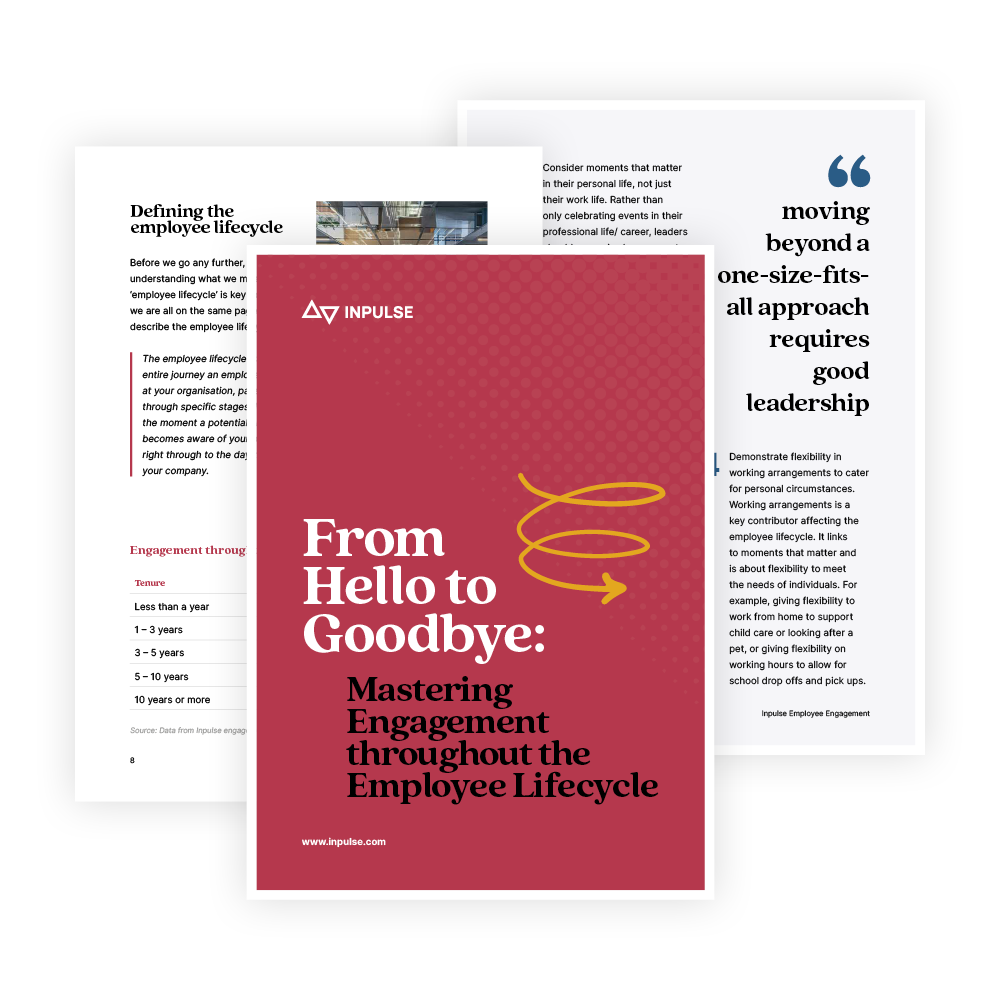5 Ways to Detect an Employees’ level of Engagement
You’ve heard the term employee engagement and you’re aware of the importance of employee engagement for team and organisational success, but do you know how to identify whether an employee is engaged or disengaged?
Being able to identify this is important because you’ll be able to address disengagement before it becomes problematic. All employees need to align – a team is only as strong as their weakest link, therefore a disengaged employee can weigh the entire team down. They can cause missed deadlines, damage workplace culture, productivity and profit and can even affect talent retention on the grander scale.
According to research, engaged employees perform 20% better, and companies with highly engaged employees can outperform their competitors by 147%!
Make use of employee engagement surveys
The best way to determine whether an employee is engaged or disengaged is to look at the facts by doing an employee engagement survey. If you’re not making use of tools such as these, you’re really just relying on your personal opinion and making assumptions. Of course, it’s possible to make accurate assumptions – it’s not difficult to notice poor performance or high absenteeism, for example. However, an employee engagement survey is going to provide solutions: it will help you to detect what the employee feels, what they want, and what needs to be done for them to become engaged.
Here’s what an engaged employee looks like:
1. They’re enthusiastic and often suggest new ideas
Engaged employees are very enthusiastic; they’re excited to achieve, excited about new ideas and even present new ideas, themselves. They’re always showing up and getting involved and are absolutely committed to meeting the goals and objectives of the team and organisation. An engaged employee needs less encouragement to perform and stay motivated, therefore, for management, they save time and opportunity cost. And because they perform better, they positively affect profit. Their go-getter attitude also impacts those around them and serves to improve organisational culture. This is why it’s in an organisation’s best interest to consistently work on turning disengaged employees, into highly-engaged ones!
Remember, engaged employees perform very much the same whether they’re working from home, or in-office – they’re usually agile because they’re motivated by results. However, in these unprecedented circumstances, you may need to support your workforce more than usual.
2. Their rate of absenteeism is very low
High absenteeism is a real issue for many organisations – and most have no idea how to change it. The good news is, you can do something about it, but only if you’re willing to accept that a vast majority of your workforce is disengaged. In fact, a study proves that companies with highly engaged employees experience 41% less absenteeism than disengaged workplaces.
Absenteeism absolutely hampers success: deadlines and productivity is threatened and therefore profit; teams become misaligned, workplace culture becomes toxic and it affects many different processes and operations. Improve your employee engagement and see a great improvement in absenteeism!
3. They’re great communicators
For teams, individuals and the entire organisation to thrive, communication is critical. Teams rely on communication to maintain cohesion, creativity, innovation, productivity and more. If an employee fails to communicate within their teams, whether it’s about their progress, obstacles, providing possible solutions, presenting ideas etc, the team will not function to its full potential. Employees also need to communicate their needs and wants to remain satisfied in their roles.
Engaged employees know that by communicating, they’re contributing to the success of the team and the organisation, and know that by expressing their desires, they’re breaking the barriers between workforce and management – they recognise that these two entities work as one.
4. They’re always eager to learn and are happy to take on additional tasks/responsibilities
Surprisingly, not every employee is eager to learn a new skill even if they’re aware of the benefits of expanding their skill set. This is especially true for disengaged employees. They’re also more likely to reject additional tasks or responsibilities – they’ll have a good excuse as to why they cannot help. There are many reasons for this, but one of the driving factors is that disengaged employees often see their jobs as something they have to do to earn a living – unlike engaged employees who see their jobs as a gateway to self-improvement, personal development, knowledge acquisition and the achievement of goals. An engaged employee will often do whatever it takes to see the success of the team and themselves, to exceed expectations and perform to the best of their ability. They will always be open to learning something new and are eager to take on new tasks and responsibilities because to them, knowledge is power.
